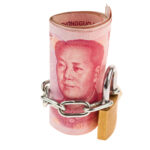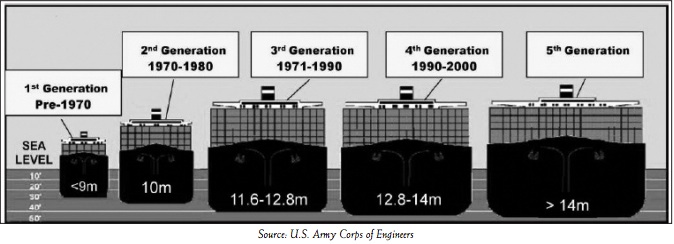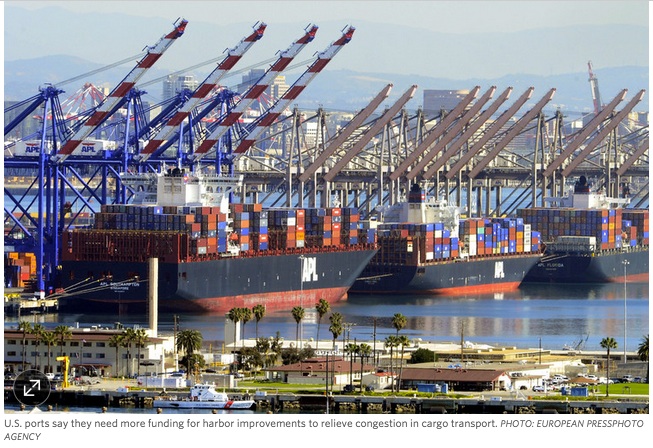
The Reversed Role of Chinese Deposit Insurance
May 4, 2015
Promonomics
May 5, 2015More than a year behind schedule, now it looks like the Panama Canal will reopen next April. Hoping to compete against the Suez Canal for the world’s very largest container ships, first the Panama Canal had to expand.
Where are we going? To terminal gridlock.
Container Ships
Our story starts in 1950. At a typical port, flour or clothing or raw cotton was packed in barrels or bags or crates. Transported by truckers to loading docks, shipments were stored in local warehouses or placed under roofed piers before boarding the boat.
Below, longshoreman were probably loading bags of flour onto a vessel. While the picture dates back to the 1920s, it would also have represented a 1950s port.

There was a better way.
In 1956, a North Carolina trucker, Malcom McLean, rigged an oil tanker with 58 trailer trucks. Not the whole truck, but just the cargo containers were placed in slots on the vessel in Newark N.J. When they arrived in Houston, rather than unloading the containers’ contents, they were hoisted onto “running gear” and off they went to their destination.
You see the difference. Whereas moving your cargo 1,000 feet from the street to a ship could have taken as long as an entire ocean trip, instead it took moments because nothing had to be unloaded and reloaded. Cost plunged from $5.83 to less than 16 cents a ton as did pilferage, damage and the number of longshoremen.
Only a year later, they started stacking containers in vessels and the rest of the story is supply chain history.

Fast forward to 2015.
Terminal Gridlock
With higher bridges and deeper water, East Coast ports in the U.S. have prepared for the behemoth vessels that will cross the new Panama Canal. Most though are still not prepared for the infrastructure that 14,000 containers will need after they arrive.
In Portsmouth, Virginia, one trucker reported an 8-hour delay picking up a load of bedding—two hours getting to the terminal, and then six inside. Three large vessels had arrived—too much for the port to handle. In Newark, they need more chassis to unload vessels.

And the Panama Canal has not even reopened yet!
Our Bottom Line: Supply Chain Links
I guess there is a reason we call it a supply chain. Huge container vessels are more efficient than ever. But at many of our ports, the other links in the chain need to catch up.

![econlifelogotrademarkedwebsitelogo[1]](/wp-content/uploads/2024/05/econlifelogotrademarkedwebsitelogo1.png#100878)



